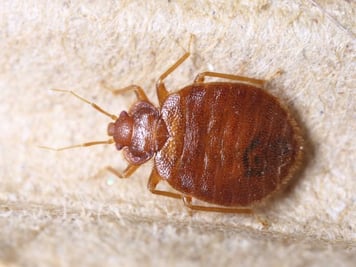Recognizing the Lifecycle of Parasites for Targeted Control Approaches
Comprehending the lifecycle of insects is a fundamental facet of efficient parasite administration approaches. With a much deeper understanding of exactly how pests flourish and advance, tailored control methods can be designed to attend to details points in their lifecycle, ultimately leading to even more effective insect administration end results.
Significance of Recognizing Pest Lifecycle
Comprehending the lifecycle of parasites is important for developing reliable and targeted control strategies in bug monitoring. By comprehending the numerous stages an insect goes through from egg to grownup, parasite control professionals can identify weak spots in the lifecycle where treatment can be most effective. Understanding when larvae are most energetic can aid determine the optimal timing for applying larvicides. Furthermore, understanding the life expectancy of a parasite types can help in predicting population development patterns and possible invasion risks.
Moreover, recognizing the specific ecological problems needed for every phase of the parasite's lifecycle can guide choices on habitat alteration or exclusion methods to lower and interfere with the lifecycle bug populaces. This understanding allows pest management experts to implement aggressive actions instead than relying only on reactive treatments, bring about even more sustainable and lasting parasite control remedies. Inevitably, an extensive understanding of parasite lifecycles encourages bug control specialists to tailor their strategies properly, taking full advantage of and minimizing environmental influences control end results.
Trick Stages in Parasite Growth
To efficiently apply targeted control approaches in bug management, a critical element exists in thoroughly determining and comprehending the key phases in pest advancement. Bug development usually is composed of numerous vital stages that are essential for their lifecycle and management.

Vulnerabilities in Parasite Lifecycle
Throughout the numerous stages of a bug's lifecycle, distinct susceptabilities emerge that can be purposefully targeted for reliable control procedures. One important vulnerability hinges on the egg phase, where insects are commonly more vulnerable to certain pesticides or organic control agents because of their soft external covering, making them easier targets for intervention. Furthermore, the nymph or larval stage presents vulnerabilities as bugs undertake rapid growth and advancement, needing high power intake that can be exploited by disrupting their food sources or presenting development inhibitors. Pupal stages, defined by stability and makeover, supply a window for targeted control through physical barriers or certain therapies that prevent successful emergence. Lastly, grown-up bugs, while a lot more resistant due to their reproductive capacity, can still be susceptible during breeding or egg-laying tasks, which can be disrupted via scent traps or sterilization techniques. Recognizing these susceptabilities in the parasite lifecycle is essential for establishing exact and reliable control techniques that efficiently manage pest populaces while decreasing ecological impact.
Implementing Targeted Control Procedures

Applying targeted control steps generally entails a multi-faceted method. This might consist of habitat alteration to make the environment much less welcoming to pests, such as eliminating standing water A1 bed bug extermination houston for insect control or sealing entrance factors for rats. Additionally, organic control methods can be utilized, where all-natural killers or pathogens are presented to maintain pest populations in check.
Integrated Insect Management (IPM) strategies that incorporate numerous control procedures in a collaborated and sustainable manner are often the most effective in attaining long-lasting insect management objectives. By carrying out targeted control steps based on a comprehensive understanding of pest lifecycles, parasite populaces can be efficiently controlled while minimizing threats to human wellness and the environment.
Enhanced Bug Management Practices

Furthermore, the consolidation of organic control representatives, such as natural killers or pathogens of insects, can aid decrease dependence on chemical pesticides and advertise a more balanced ecological community. Implementing physical barriers and catches can additionally become part of enhanced bug monitoring practices, using safe and targeted solutions for insect control. Furthermore, using scents and various other semiochemicals can disrupt pest mating patterns and communication, resulting in minimized parasite populaces over time.
Final Thought
By recognizing crucial stages in pest growth and susceptabilities in their lifecycle, targeted control steps can be executed to minimize parasite populations. Enhanced parasite administration practices can aid decrease the dependence on broad-spectrum chemicals and promote even more sustainable and environmentally pleasant pest control approaches.
Comprehending the lifecycle of pests is essential for creating effective and targeted my site control techniques in bug monitoring. By understanding the different phases a pest goes via from egg to adult, bug control professionals can recognize vulnerable factors in the lifecycle where intervention can be most effective. Ultimately, a thorough understanding of parasite lifecycles empowers bug control practitioners to customize their strategies successfully, reducing ecological impacts and maximizing control outcomes.
By executing targeted control actions based on a comprehensive understanding of bug lifecycles, pest populations can be successfully regulated while minimizing dangers to human wellness and the environment.
By identifying crucial phases in pest advancement and susceptabilities in their lifecycle, targeted control measures can be carried out to decrease pest populations.